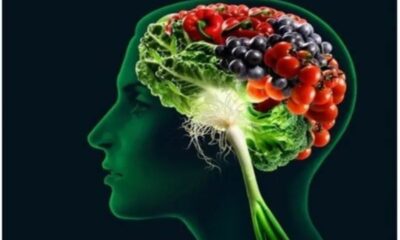An American researcher detailed how scientific instruments may be used to treat mental health conditions such as anxiety, major depressive disorder (MDD), and posttraumatic stress disorder (PTSD). They discuss the function of science, the physiology and varieties of stress, responsiveness, methods of treatment, and the available data.
Context
An alarming rise in mood and anxiety disorders has resulted from the worldwide surge in psychological stress caused by events such as the coronavirus disease 2019 (COVID-19) pandemic, political instability, and climate change. This increase is almost a “second pandemic,” affecting many different groups, particularly women and younger people. It highlights the need for initiatives to address this mental health epidemic and asks for realistic scientific approaches.
Science’s immediate and long-term roles
It is crucial to have a thorough scientific understanding of these problems in order to address the mental health epidemic. It is possible to take immediate action at the international, local, healthcare, and personal levels by putting mental health first, putting supportive policies in place, spreading awareness, and providing evidence-based lifestyle treatments. Important takeaways include the importance of resilience, the treatability of diseases, and the variety of routes to depression. They open up new avenues for research that may result in individualized scientific methods to prevention and treatment.
Stress response and stress biology
Stress biology is the study of organism-environment interaction that facilitates survival and best coping strategies. A highly preserved stress system that is dysregulated may give rise to anxiety and mood disorders.
Over a century passed, with major advances in stress biology being made by Walter Cannon with his acute stress focus and Hans Selye with his chronic stress investigation. With consequences for mood disorders, the intricate hypothalamic-pituitary-adrenal (HPA) axis was discovered, involving important participants like corticotropin-releasing factor (CRF), adrenocorticotropic hormone (ACTH), and glucocorticoid receptors. Stress triggers might be metabolic, physiologic, physical, or psychosocial, but they all converge on the HPA axis to cause a standard physiological reaction.
Adaptive coping requires a healthy stress response, which is characterized by fast rise of ACTH and glucocorticoids that are quickly stopped by negative feedback, resulting in neurobiological resilience. Chronic stress, on the other hand, upsets this equilibrium, resulting in long-term physiological changes known as allostatic load. This has serious repercussions, such as maladaptive neuroplasticity inhibition and heightened susceptibility to mood disorders and other health problems.
Like immunological illnesses in their responsiveness, psychosocial stress is a trigger and a catalyst for relapse in clinical depression. It functions similarly to disorders of stress reactivity. Stress reactivity is associated with depression susceptibility or resilience, and individual variances are influenced by temperamental factors and genetic variants. A person’s predisposition to internalizing or externalizing psychiatric diseases is determined by their temperamental characteristics, which are impacted by both inherited and experience variables. There is a markedly higher risk of anxiety disorders and depression in females, suggesting that there are differences in biological disease . Through epigenetic modifications and brain remodeling, experience—particularly in infancy and adolescence—shapes a person’s predisposition to depression.
Analytical tiers and the function of animal models
To regulate reactions to stimuli and modify behavior, the brain combines neural circuitry with genetic, molecular, and cellular components. Analysis at all these levels is necessary due to the connection between stress biology and mood and anxiety disorders, taking into account both individual traits and environmental influences. Understanding stress processes and the effects of experience and genetics on resistance or susceptibility depends heavily on animal models. Rodents under chronic social defeat stress provide an excellent example of both resistance and sensitivity, providing insights into changes brought on by stress and adaptive processes.
Overcoming depression
The monoamine theory was first supported by the accidental discovery of classical antidepressants, but their gradual effectiveness cast doubt on the idea of a straightforward “serotonin imbalance.” Current therapies for depression, including as ketamine, nonpharmacological methods, and NMDA glutamate receptor targeting, offer quick, resilience-associated neuroplasticity.
While there is hope for treatment-resistant depression with the new medicines, more work needs to be done in the areas of molecular discoveries, understanding many cause variables, and identifying biomarkers in order to precisely target mood disorders.

 Diabetology2 weeks ago
Diabetology2 weeks ago
 Diabetology2 weeks ago
Diabetology2 weeks ago
 Diabetology1 week ago
Diabetology1 week ago
 Diabetology1 week ago
Diabetology1 week ago
 Diabetology1 week ago
Diabetology1 week ago
 Diabetology2 weeks ago
Diabetology2 weeks ago
 Diabetology1 week ago
Diabetology1 week ago
 Diabetology2 weeks ago
Diabetology2 weeks ago
















